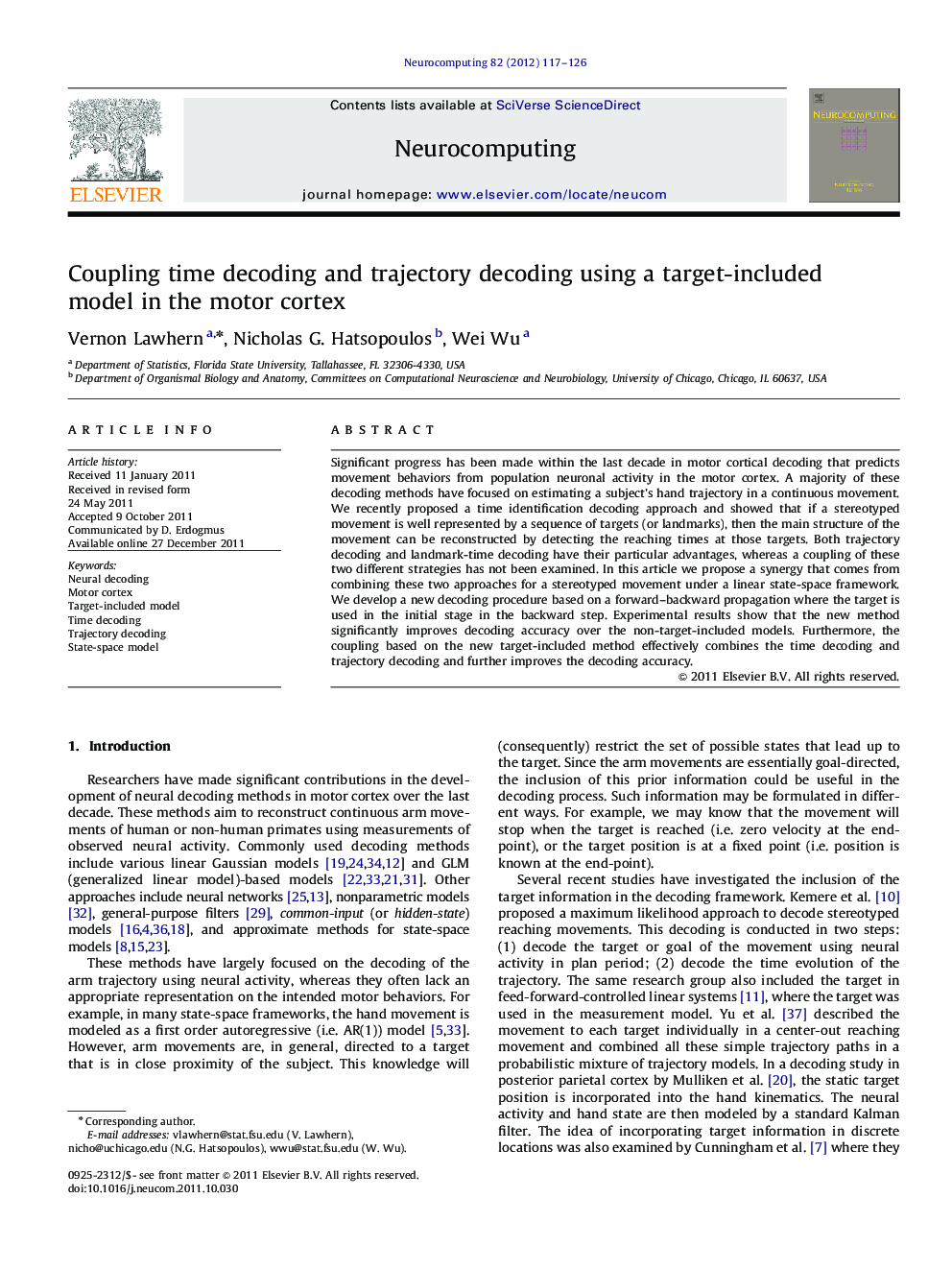| Article ID | Journal | Published Year | Pages | File Type |
|---|---|---|---|---|
| 410017 | Neurocomputing | 2012 | 10 Pages |
Significant progress has been made within the last decade in motor cortical decoding that predicts movement behaviors from population neuronal activity in the motor cortex. A majority of these decoding methods have focused on estimating a subject's hand trajectory in a continuous movement. We recently proposed a time identification decoding approach and showed that if a stereotyped movement is well represented by a sequence of targets (or landmarks), then the main structure of the movement can be reconstructed by detecting the reaching times at those targets. Both trajectory decoding and landmark-time decoding have their particular advantages, whereas a coupling of these two different strategies has not been examined. In this article we propose a synergy that comes from combining these two approaches for a stereotyped movement under a linear state-space framework. We develop a new decoding procedure based on a forward–backward propagation where the target is used in the initial stage in the backward step. Experimental results show that the new method significantly improves decoding accuracy over the non-target-included models. Furthermore, the coupling based on the new target-included method effectively combines the time decoding and trajectory decoding and further improves the decoding accuracy.
